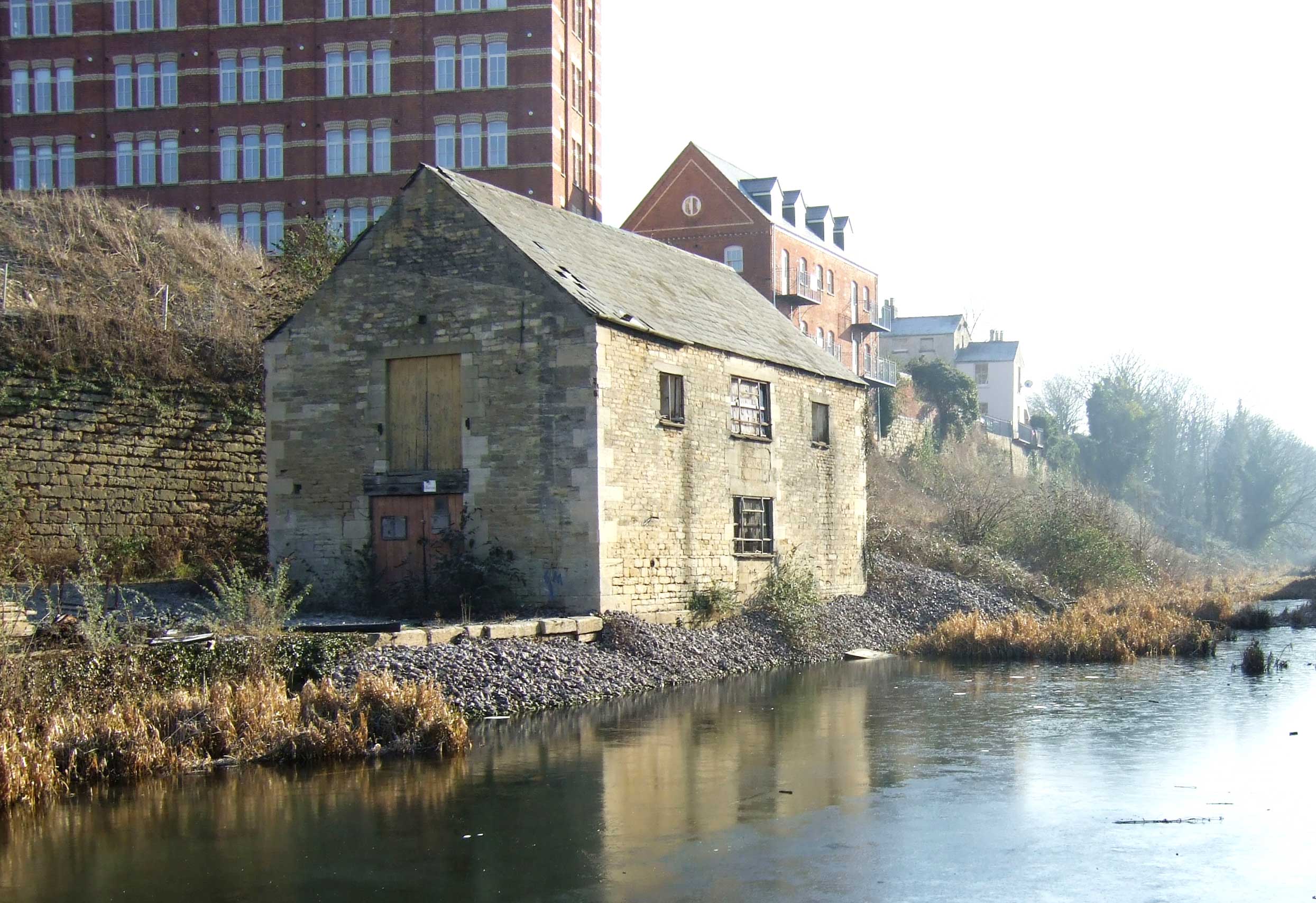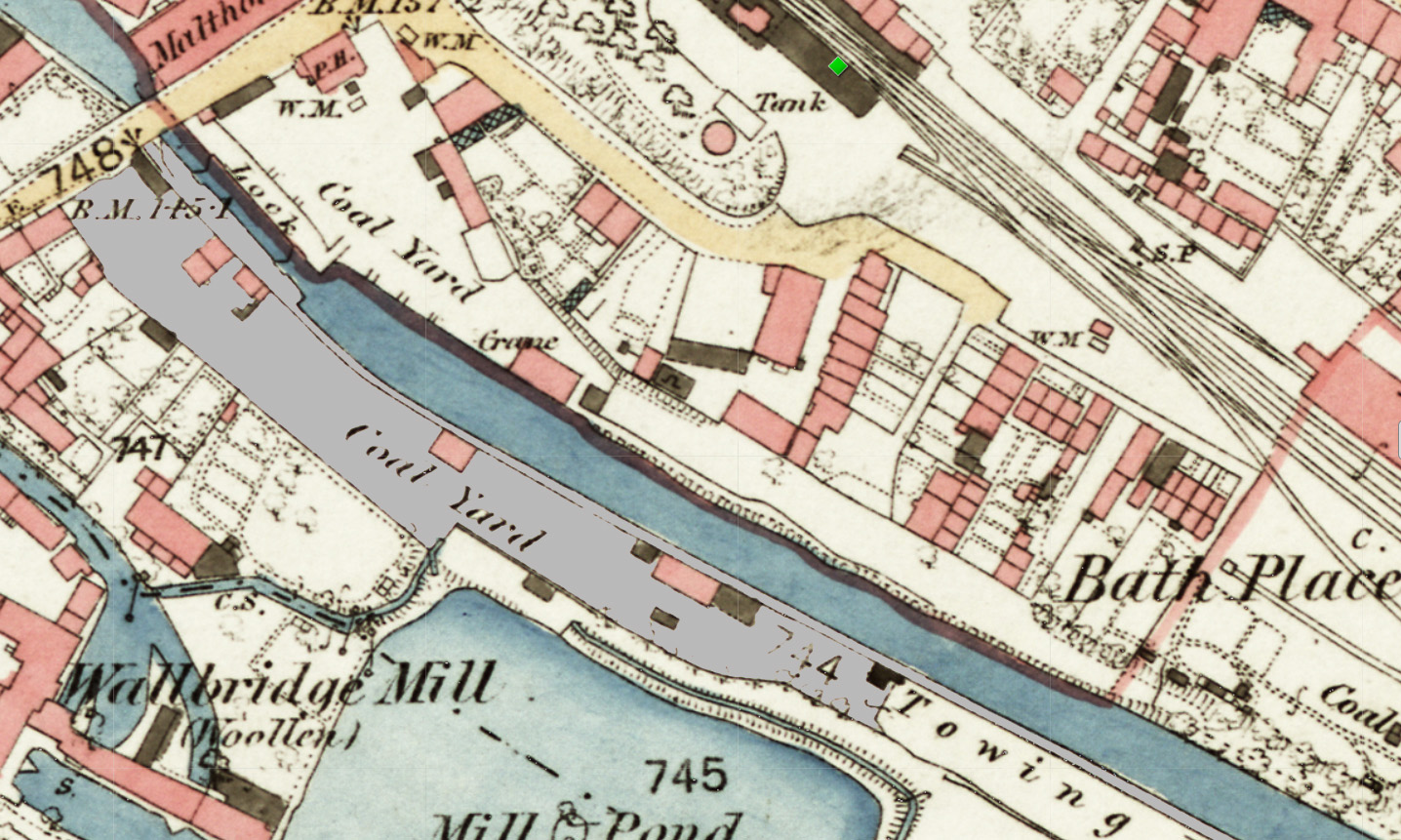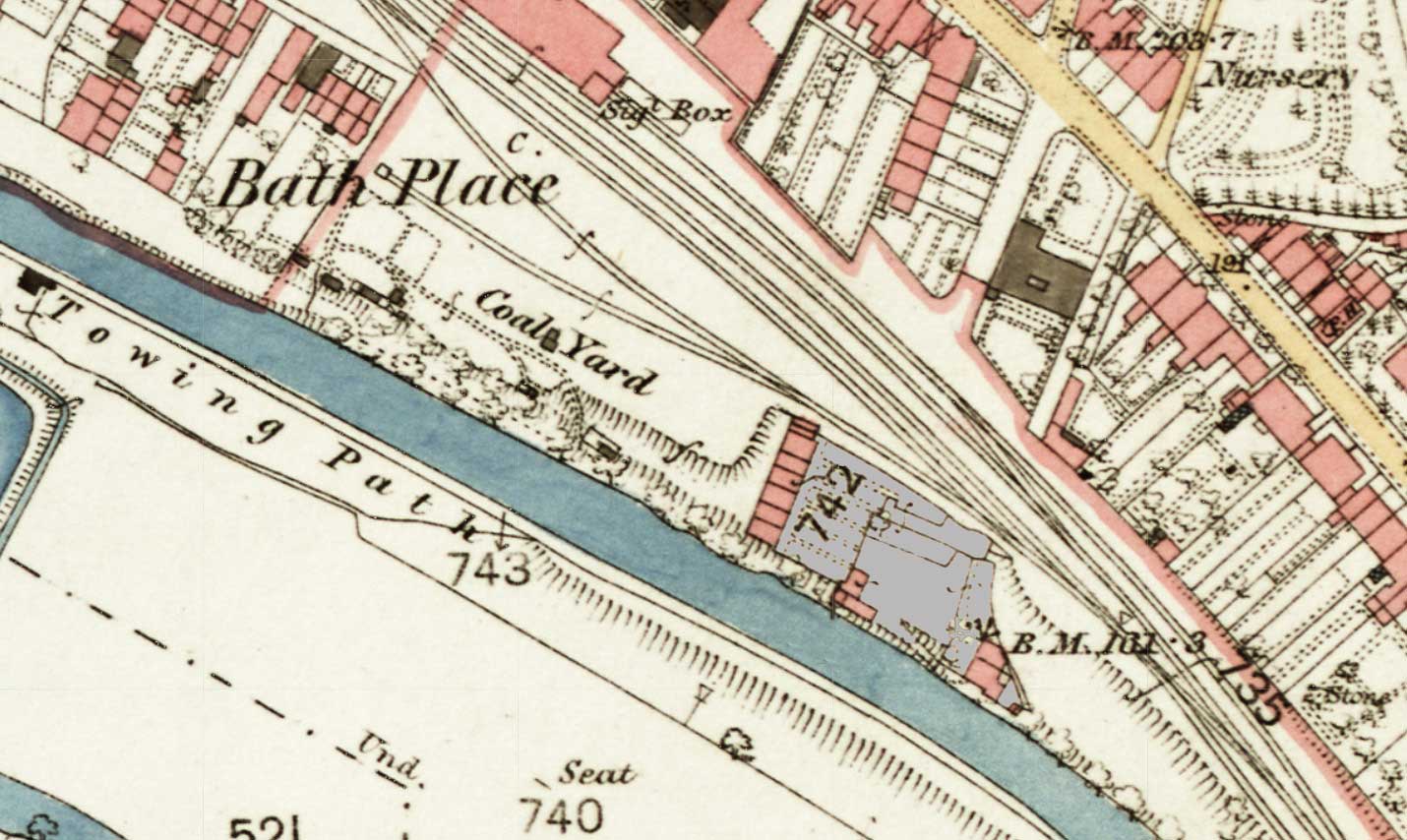The T&S Company had two wharfs serving Stroud on the east side of Wallbridge Bridge, and there was a private coal wharf almost a quarter of a mile to the south-east. This section of canal was closed in 1933 and was restored between 2011 and 2018.


This was a public wharf on the north side of the canal that could be used by anyone who paid a fee.
The painting dated 1848 shows piles of coal destined for local delivery. To the right is the Company’s warehouse beside the canal, and in the centre is the Bell Inn. Between these two is a weighing machine and a salt store. The building to the left is the house for the Company’s wharfinger/lock keeper on the south side of the canal.
In the background can be seen the original timber viaduct carrying the Great Western Union Railway over the valley of the Slad Brook. In the foreground is the millpond of Wallbridge Mill.


The warehouse on Wallbridge Upper Wharf was built in 1828, and a cast iron crane was erected nearby. The aim was to encourage the conveyance of small consignments of general merchandise along the canal. Such a trade was soon established between Gloucester and London using fly-boats.
These fly-boats cut the normal journey time by being lightly loaded and towed by relays of horses working day and night. As a result, they could operate to a regular schedule, and they were very successful until the railways arrived.
In later years, the warehouse was used for storing grain and then building materials.


Wallbridge Lower Wharf developed along the south side of the canal during the nineteenth century, with plots being leased to tenants for storing coal or road stone and for other businesses. Confusingly, it was also known as Middle Wharf by those who used the name Lower Wharf for the Stroudwater Company’s terminus basin nearby.
In 1897, Stroud Urban District Council leased a small plot on the towpath beyond the end of the Lower Wharf to provide for a changing room for the Stroud Swimming Club.


This small private coal yard was on the north side of the canal south-east of Bath Place. It was also known at Beard’s Wharf after the coal merchant who was based there. When the railway was built, a tunnel under the line was provided to maintain access from London Road.
The wharf was cleared away when the railway yard above expanded in the early twentieth century.
Building date for warehouse on Upper Wharf from TS/227.
Fly-boat trade from The Thames & Severn Canal by Hunphrey Household.
Later uses of warehouse from T&S rent records.
Rosebank Wharf from OS maps.
Start of swimming from T&S rent records
Stroud Swimming Club


By the end of the nineteenth century, the the half-mile of canal between the wharfs was used for watersports by members of the Stroud Swimming Club